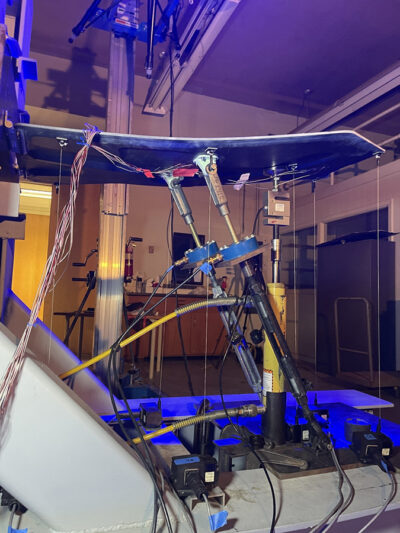Programs encourage carbon-emission reductions
By Gary Dale|December 2017
The Green Engineering Integration and Outreach Committee promotes a holistic, systems approach to improved energy efficiency, sustainability, renewable energy and design.
International Civil Aviation Organization member states in March forged a consensus that launched the Carbon Offsetting and Reduction Scheme for International Aviation to address any annual increase in total carbon dioxide emissions above 2020 levels from international civil aviation. Beginning in 2020, under CORSIA, operators of international flights will be required to purchase offsets for the growth in CO2 emissions.
Airports moved ahead with plans to focus on the environmental impact of their operations. In February, London’s Heathrow Airport announced it would make the effects of its new fourth runway carbon neutral and establish a center of sustainability excellence “for sustainability at airports and in the wider aviation sector.” India’s Mumbai airport achieved carbon neutrality in the Airport Carbon Accreditation certification program in May.
In January, the Port of Seattle, Boeing and Alaska Airlines released the Biofuel Infrastructure Feasibility Study, which is considered a step in Seattle-Tacoma International Airport’s goal of supplying up to 50 million gallons of aviation biofuel per year.
Sweden and the United States have collaborated on certification of catalytic hydrothermal conversion-to-jet biofuel, or CHCJ-5. At its facilities in Linkoping, Sweden, in April, Saab Gripen conducted test flights with 100 percent CHCJ-5 made of rapeseed oil. This was the first time a single engine fighter flew with 100 percent biofuel. Applied Research Associates worked with the U.S. Navy to develop and test CHCJ-5, which culminated in a flight test at Naval Air Station Patuxent River, Maryland, of an EA-18 Growler aircraft, performing just as with JP-5, with 80 percent fewer greenhouse gas emissions.
On Sept. 30, NASA awarded a limited series of risk-reduction contracts to help industry contenders reduce technology risk and maintain momentum before the first Ultra-Efficient Subsonic Technology X-plane demonstrator flies in the mid-2020s. Aurora Flight Sciences was awarded work for its D8 double-bubble design. Boeing received study contracts for both blended-wing body and transonic truss braced wing concepts. The risk-reduction tasks are focused on design and analysis activities through September 2018. In October in Connecticut, Pratt and Whitney conducted an engine ground test demonstration of ultra-high bypass technologies under the FAA’s Continuous Lower Energy, Emissions and Noise Program. It is hoped these technologies will contribute to reduced aircraft noise and fuel consumption.
In April, Aurora Flight Sciences, Mooney International and Airspace Experience Technologies unveiled their electric vertical takeoff and landing aircraft concepts at Uber’s Elevate Summit. Also in April, Germany-based Lilium Jet completed an unmanned flight test of a prototype two-seater — a compact, lightweight electric plane capable of vertical takeoff and landing. Germany-based E-volo, whose concept is the Volocopter, agreed to a finance deal for over 25 million euros from automobile firm Daimler and other investors. In September, Dubai staged a test flight of the Volocopter. In April, it was announced that Boeing’s HorizonX and JetBlue’s Technology Ventures are investing in Zunum Aero, a startup based in Washington state that’s developing an electric-powered aircraft, targeting regional, short-haul routes for 10- to 50-seat aircraft.
Also this past year, Tohoku University and Mayekawa in Japan developed a new hybrid energy storage system comprised of electric and hydrogen energy storage systems, which combines the effective utilization of renewable energy at normal times and the ability to be a power source during emergencies. Scotrenewables Tidal Power reported its SR2000 floating tidal turbine deployed for testing at the European Marine Energy Center achieved its rated 2 megawatt capacity in April. And E.ON worked on developing a demonstration site for airborne wind technology in Ireland.
Contributors: Committee members



































